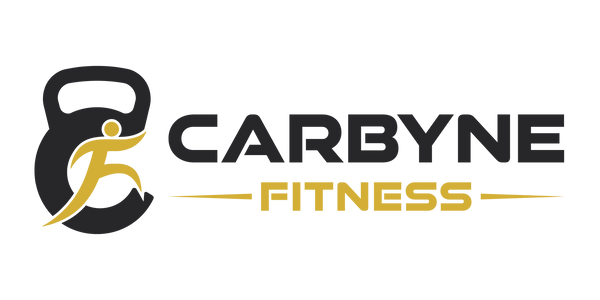Imagine this scenario: You go into the gym, don a weight vest, and five minutes later, you are stumbling around in a daze, asking yourself why your knees are hurting. We have all seen this moment - a person taking far too much the first time and making what would have been an awesome training aid a one-way ticket to the land of the injured.
Here's the thing about weight vests: they're not about proving how tough you are. They're about smart progression and getting results without wrecking your body. But most people get the weight selection completely wrong from day one. So what's the right amount? The answer might shock you, because it's probably half of what you're thinking. Let’s find out.
Starting Weight: Less is More
The magic number for beginners is 5-10% of your body weight. If you weigh 70kg, that means starting with a measly 3.5-7kg. Feels ridiculously light, doesn't it? But here's why this seemingly wimpy weight makes perfect sense. Your body needs time to adjust to carrying an extra load. Every step becomes harder. Your heart works overtime. Your joints experience forces they've never dealt with before.
Jump in too heavy and your knees start taking a beating. Your back rounds forward. Recovery takes forever. Suddenly, that "challenging" workout becomes a recipe for frustration and potential injury.
Building Up: The Art of Patient Progress
Once you've nailed your starting weight for 2-3 weeks, you can bump it up by small amounts - around 2-5% increments. This might feel painfully slow, but your body will thank you later.
Different people progress at different speeds. Complete beginners might increase every few weeks. Fitter folks could potentially add weight weekly, provided their form stays perfect and they're recovering properly between sessions.
Your body gives clear signals when it's ready for more challenges. You should breeze through workouts with good posture. Recovery should happen normally. Sleep shouldn't suffer. If any of these go sideways, stick with your current weight a bit longer.
The Upper Limits: When Enough is Enough
For most recreational users, 15-20% of body weight represents the sensible ceiling. This might take months to reach safely, and honestly, many people never need to go this heavy.
Certain percentages are exceeded occasionally in military training, though these individuals have specialised conditioning and are subject to specific job necessities. To routine gym users and those who stay fit through exercising, increasing to more than 20 percent would pose serious injuries that are not worth the risk.
Different activities handle different weights, too. Walking and hiking can typically manage more load than explosive movements. Bodyweight exercises need much lighter resistance to maintain proper technique.
Choosing Your Weapon: The Right Vest Matters
Plate loaded systems offer the ultimate flexibility. Take our CARBYNE Plate Loaded Weight Vest - it handles up to 80kg capacity, making it perfect for everyone from complete beginners to serious athletes. The military-grade construction includes removable padding and adjustable straps that actually keep you comfortable during tough sessions.
The real advantage? Precise weight control. You can add or remove standard weight plates in tiny increments, matching your exact progression needs. Perfect for families with different fitness levels or anyone planning long-term development.
Fixed weight vests provide convenience but zero flexibility. Great if you know exactly what you need and never plan to progress. Otherwise, you'll outgrow them quickly.
Exercise-Specific Guidelines
When you are well prepared, walking and hiking can manage 10-15 percent of your body weight. The slow, impactless nature lowers the load on joints and provides good cardiovascular and strength advantages.
Bodyweight movements need more conservative loading. Push-ups, squats, and lunges should start around 5-8% of body weight. Even this "light" resistance will make your muscles work significantly harder.
High-intensity activities require extreme caution. Sprinting, jumping, and explosive movements should use minimal weight (2-5% max) or be avoided entirely until you're seriously fit.
Ruck Training: A Different Beast
Rucking involves sustained walking with weighted load - typically 15-25% of body weight over longer distances. But this only applies after months of proper conditioning.
Weight vests work better than backpacks for rucking. The load is distributed across your torso instead of pulling you backwards. This improves balance, reduces spinal compression, and allows better arm movement.
Safety First: Non-Negotiable Rules
Perfect form trumps heavy weight every single time. If adding resistance compromises your movement quality, reduce the load immediately. No exceptions.
Pay attention to red flags: back pain or shoulder pain, postural instabilities, feeling unusually tired for more than 24 hours or any joint aches. Such symptoms imply that you should step back or consult a professional.
Do not use weight vests to learn twisting, jerking, and naturally high-impact movements until you have become skilled at such movements with lighter loads. Exercises like kettlebell swings or burpees may apply unsafe pressure on the joints under the additional weight.
Real Users, Real Results
The feedback from CARBYNE weight vest users consistently highlights two key points: proper fit matters enormously, and starting lighter leads to better long-term results. Many users admit they initially wanted to go heavier but found that conservative progression delivered superior outcomes.
Professional trainers universally recommend investing in quality, adjustable systems rather than fixed alternatives. The ability to fine-tune resistance prevents training plateaus and reduces injury likelihood.
Your Partner in Progression
At Carbyne Fitness, we've designed our plate loaded system specifically for smart progression. Whether you're starting your first walking programme or adding challenge to advanced strength routines, our vest grows with your abilities.
The secret to weight vest success? Patience and consistency. Start conservative, maintain perfect form, and give your body time to adapt. Your future self will appreciate the intelligent approach over the ego-driven alternative.
Just remember: the best weight vest to buy is the one you can wear comfortably and safely. Make good decisions, take baby steps, and have fun getting stronger, healthier, and fitter. Your vest should be an aid to the workouts, not the focus of them.

